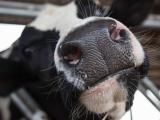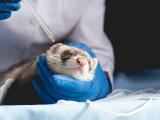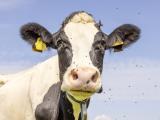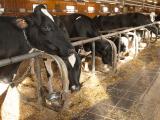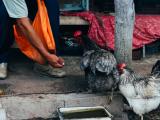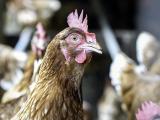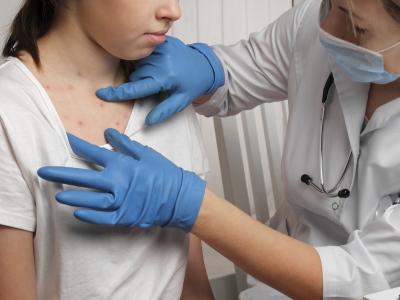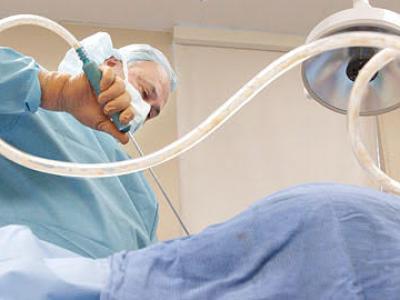May 21, 2013 (CIDRAP News) – Science and preparedness discussions in the wake of China's H7N9 avian flu outbreak took the stage at two medical meetings today, with experts uneasy about how the virus has behaved so far and questioning its source and if the threat to humans can be contained.
A panel of top influenza experts aired their concerns today in a live webcast from the American Society for Microbiology (ASM) annual meeting in Denver, in advance of their presentations at a late-breaking session today. H7N9 was also on the agenda at the World Health Assembly (WHA) in Geneva, where experts and policymakers addressed the risk.
Albert Osterhaus, DVM, PhD, who heads a well-known virology department at Erasmus Medical Center in the Netherlands, said H7N9 has sparked similar fears that surfaced with the H5N1 virus. If either one gains the capacity for efficient human-to-human transmission and becomes a pandemic virus, the result could be devastating, he said.
The next threat could be a different novel flu virus, such as the 2009 emergence of the novel H1N1 virus in Mexico, he said. "We have to be flexible. We really have to invest in pandemic preparedness," Osterhaus said.
Robert Webster, PhD, a highly respected virologist at St. Jude Children's Research Hospital in Memphis, said experts don't yet have a handle on the H7N9 virus, but he lauded China for its quick response in shuttering poultry markets. Those steps in locations such as Shanghai seem to have had an effect on curbing new human infections.
He said the global health community had little idea what was going on in China during the height of H5N1 outbreaks in birds and human cases, but the country has been transparent about H7N9. "It's like the difference between night and day," Webster said.
Webster and Osterhaus both said poultry are the likely source of the virus's spillover into humans. Osterhaus said the key task is to prevent the virus from spreading to more humans, which could limit its opportunities to mutate and become more infectious and transmissible.
The two experts varied some on the best strategies for controlling the disease in poultry. Webster said poultry influenza vaccines aren't standardized for antigen content and don't ensure sterilizing immunity. "They are second class," he said. Webster said he would urge Chinese veterinary authorities to continue stamping out birds that are known to be exposed to the virus.
Osterhaus, however, said he felt less negative about poultry vaccines as a tool to help control the virus in birds. He added that China faces a tall task in controlling the virus in birds, due to its size, the number of wild birds, and the different flu viruses that circulate in the region. "It's like fighting a moving target," he said.
Webster said he was concerned about yet another virus—H9N2—that has now spread widely among poultry houses and has been identified as the backbone of the novel H7N9 virus. He said the virus is ubiquitous and occasionally infects humans and may be a donor virus that adds its gene segments to other flu viruses. "We have to continue to watch it," he said. "It's scaring me the way it's becoming humanized."
Carole Heilman, PhD, who directs the infectious disease research program at the US National Institute of Allergy and Infectious Diseases (NIAID), said a federal task force is assessing the threat of the new virus. So far the biggest preparedness step centers on vaccine development, with clinical lots of H7N9 vaccine being developed to test its characteristics.
"It won't be like seasonal flu vaccine," she said. Studies are needed to answer important questions, such as how much antigen is needed, how many doses are required, and if an adjuvant will be needed, she said.
Federal officials are also very concerned about the new strain being introduced into US poultry flocks, which is why they have established strict handling measures for labs that will be working with H7N9 samples, Heilman said.
Meanwhile, at the WHA in Geneva today, several global health and avian flu experts spoke about H7N9 at a side event hosted by China's government with support from the World Health Organization (WHO), according to the WHO's Twitter feed.
Keiji Fukuda, MD, the WHO's assistant director-general of health security and the environment, told the group that although China's steps to control the new virus have had an effect, he doesn't believe the virus will disappear, and he cautioned health leaders to keep their guards up. "The world is not completely ready for a large, severe event."
No decision has been made to proceed with producing an H7N9 vaccine for humans, he said.
Liang Wannian, MD, Chinese team leader of the recent joint mission between China and the WHO, told the group that aside from closing poultry markets to limit the spread to humans, the country also regulates the transportation of livestock. "Our knowledge about the virus and the disease is still limited. We must remain vigilant," he said. Wannian is also director of China's National Health and Family Planning Commission.
Juan Lubroth, DVM, PhD, chief veterinary officer with the United Nations Food and Agriculture Organization (FAO), told WHA attendees that the FAO is doing market chain analysis to explore links between live markets and farms.
See also:
May 21 ASM H7N9 Webcast
May 21 WHO Twitter feed
